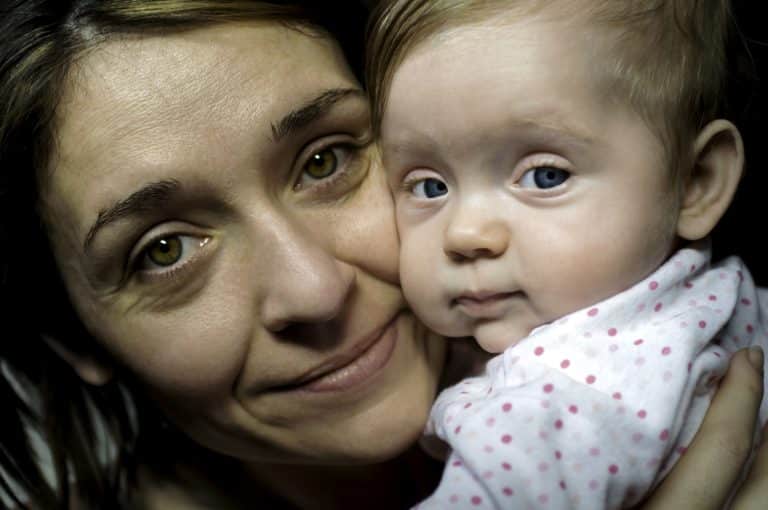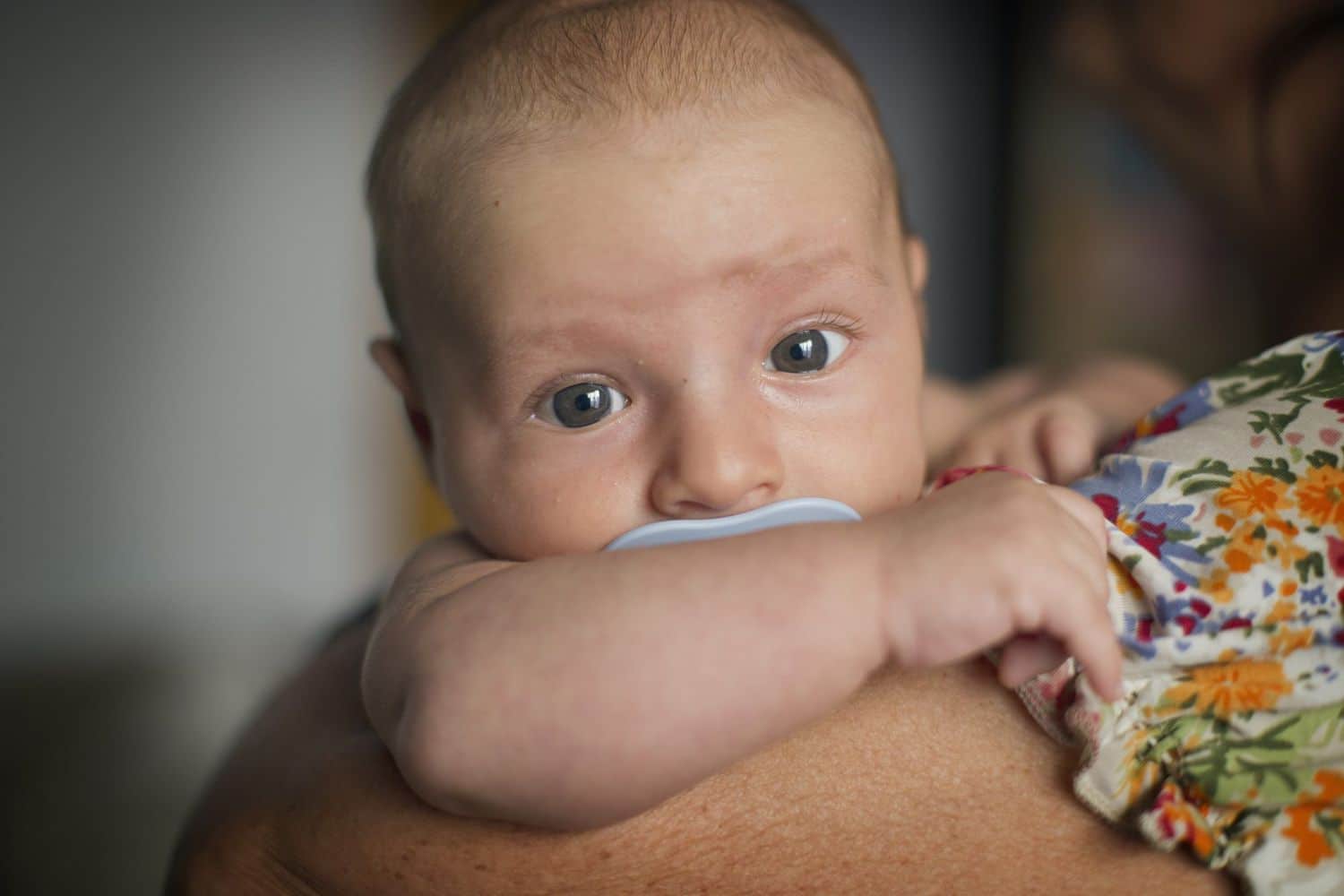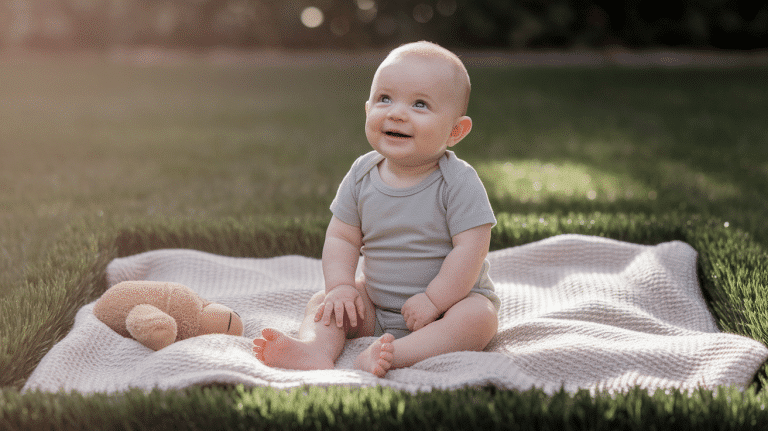If you have ever gazed into the eyes of a newborn, you will realize that their eyes have a unique shade. This is due to the genetics of that newborn.
As we grow old, our eyes’ color and undertones become more or less similar, but the subtle differences in shades can be seen in the eyes of a newborn.
This blog will discuss the various factors affecting baby eye color and the science behind it.
From knowing the fundamentals of eye colors to the environmental factors affecting eye color, we will cover as much as we can.
Understanding the Basics of Eye Color
The color of an eye is largely determined by genetics and, to some extent, by the pigments present in Iris.
There are 2 primary pigments known as melanin and lipochrome. They determine the hues of the baby’s eyes.
Melanin contributes to shades of brown and black colors, whereas lipochrome is responsible for green and blue shades in the eye color.
Moreover, one more crucial factor affects eye color, i.e., chromosomes, particularly the OCA2 and HERC2 genes.
These two genes are responsible for the production and distribution of melanin.
Its interesting to note that some eye colors dominate the other colors. For instance, brown shades dominate the blue color.
The color darkness of your baby’s eye is directly proportional to the melanin production in the body.
Ways in Which Genetics Influence a Baby’s Eye Color
1. Role of OCA2 and HERC2
The genes OCA2 and HERC2 are the major determinants of the baby’s eye color. They reside in chromosomes and show their results in the Iris.
OCA2 is largely responsible for producing melanin, i.e., essential for giving color to your baby’s eyes, skin, and hair.
HERC2 gene works in sync with OCA2, oversees melanin regulation, and takes care of the distribution to the iris.
The balance between these 2 genes dictates our eyes’ color and makes every eye color unique.
2. The Role of Melanin
As we already talked about, the role of melanin in determining the color of your baby’s eye.
Let’s talk about Melanin in some more detail.
There are two main types of melanin. First is eumelanin, which is responsible for brown and black colors.
Second is pheomelanin, responsible for giving red and yellow hues to the eyes.
Brown eyes boast a higher concentration of melanin, resulting in a darker appearance, while blue eyes exhibit a lower melanin content.
3. Environmental Factors
It is established that genetics play the dominant role in determining a baby’s eye color.
However, other factors like environment also subtly influence eye color.
One such factor is exposure to sunlight. Sunlight contains ultraviolet (UV) radiation, which can impact melanin production in the eyes.
Over time, prolonged exposure to sunlight can also increase melanin production, potentially deepening and darkening the color of the eyes.
This is particularly seen in the regions with high levels of sunlight.
In these areas, individuals may experience a gradual shift in eye color due to environmental factors.
4. Aging
Aging also affects eye color significantly. As a person ages, the production of melatonin also changes.
Generally, the melanin production increases as the person ages.
For this reason, the look of the baby’s eyes changes significantly within the first few weeks of birth.
Additionally, age can play a role in modifying eye color. As a person ages, the amount of melanin in the iris may change, leading to alterations in eye color.
It’s important to note, however, that while environmental factors can cause subtle variations, the fundamental change in eye color is guided by genetics.
The influence of sunlight and aging on eye color remains a secondary consideration compared to the dominant role played by genetics.
5. Dominance and Recessiveness
As we briefly talked about this before, the concepts of dominance and recessiveness play a crucial role in determining your baby’s eye color.
Brown eye color, governed by a dominant gene, takes the spotlight away from the blue eyes.
For instance, If one parent contributes a dominant brown gene type (represented by a capital ‘B’), it will outshine the recessive blue gene type (represented by a lowercase ‘b’) from the other parent.
This means that even if only one parent carries the brown allele, the chances are high that the child will inherit brown eyes.
On the other hand, blue eye color, being a recessive gene type, takes a more subtle approach. Both parents must contribute the recessive blue gene type for a child to have blue eyes.
Conclusion
As we have already seen in this article, the final color of the baby’s eyes is a combination of several factors.
These factors are aging, sunlight, sub-genes like OCA2 and HERC2 genes, and, most importantly, a person’s genetics.
From dominant and recessive gene types, the eye color largely depends on melanin production.
So, suppose you are expecting a baby and are wondering what color eyes your baby will have. In that case, you can easily use this newborn eye color predictor!
Or make an educated guess by just looking into your partner’s eyes!
Frequently Asked Questions
Is Eye Color Determined by Mother or Father?
A combination of genes from both parents determines eye color. The genetics of eye color are complex, with multiple genes influencing the outcome.
While brown eyes are often dominant, two blue-eyed parents can have a brown-eyed baby if they both carry the recessive gene for brown eyes.
What Is the Rarest Eye Color in The World?
The rarest eye color in the world is green, with only about 2% of the global population having this unique hue.
Blue eyes are more common, followed by brown. The difference in eye color is influenced by genetics and pigment variations, leading to different shades of eyes.
Which Parent’s Eye Color Is Dominant?
Eye color inheritance is complex, with multiple genes involved. Generally, brown eyes dominate over lighter colors like blue or green.
If one parent has brown eyes and the other has blue, the child is more likely to have brown eyes.
However, it’s not a strict rule, as genetics are complex and surprising.
Can Two Blue-Eyed Parents Have Brown Eyes Newborn?
While it’s less common to be two blue-eyed parents and then to have a brown-eyed baby, multiple factors influence eye color, and the inheritance is not always predictable.
If both parents carry certain genetic variations for brown eyes, their child may express the brown eye color even if they have blue eyes.











